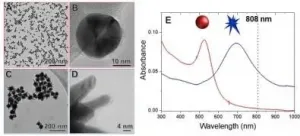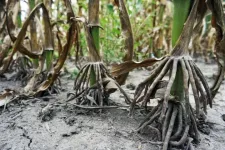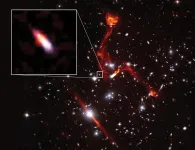Easing the burden on transgender and nonbinary graduate students
Report offers suggestions to relax a "toxic" atmosphere
2021-03-16
(Press-News.org) It would surprise no one that pursuing a graduate degree can be a stressful endeavor, and for students who are transgender and nonbinary (TNB), the atmosphere can become toxic, according to University of Houston researcher Nathan Grant Smith. In a new paper published in Higher Education, Smith provides an analysis of current literature pertaining to TNB graduate student experiences and suggests interventions in graduate education to create more supportive environments for TNB students.
"Nearly 50% of graduate students report experiencing emotional or psychological distress during their enrollment in graduate school. Levels of distress are particularly high for transgender and nonbinary graduate students who experience daily discrimination and marginalization," reports Smith, associate professor in the counseling psychology doctoral program at the UH College of Education and chair of the Department of Psychological, Health, and Learning Sciences.
In compiling and analyzing the literature, Smith was joined by Douglas Knutson of Oklahoma State University. Their team included Em Matsuno, Palo Alto University; Chloe Goldbach, Southern Illinois University Carbondale; and Halleh Hashtpari, The University of Utah.
The existing literature suggests that discrimination against TNB college students is increasing and that discrimination on college campuses (e.g., reduced access to housing, restricted access to bathrooms and locker rooms) is associated with negative psychological outcomes such as suicidal ideation. Smith and team offer a social-ecological model of transgender stigma and stigma interventions.
"We are providing a framework for understanding that people interact with the outside world at different levels," said Smith. "Those levels are one-on-one, interpersonal with groups and structural with interactions between policies and norms of an institution."
Since all levels are connected, Smith suggests everyone start by doing their own exploration of gender and challenge their internal biases that will surely impact others. For example, consider how your gender identity helped or hindered your current career path and other life experiences. Reflect on which gender pronouns you use (e.g., he/him/ his, she/her/hers, they/them/theirs) and how you would feel if others repeatedly used incorrect pronouns when talking to or about you.
"Students who are trained in TNB-affirmative environments will enter the workforce, equipped to cultivate more empowering and diverse spaces for their colleagues, their families, and for the communities in which they live," said Smith. "We encourage everyone to think of TNB inclusion as an opportunity and as an affective experience based in empathy, love, and an impulse toward community building."
Some of the team's recommendations include:
Creating affirming spaces for TNB graduate students
Reviewing - and making inclusive - university paperwork, such as applications, intake forms for student services (like counseling and health), program handbooks, course syllabi, website pages, faculty pages and student evaluations Inclusion of gender-affirming care in student insurance plans Training of counseling center and health center staff
"These and other steps are crucial for building a foundation of empathy and humility in order to provide safe, inclusive and affirming spaces for TNB graduate students," Smith reported.
INFORMATION:
[Attachments] See images for this press release:

ELSE PRESS RELEASES FROM THIS DATE:
2021-03-16
It has long been understood that a parent's DNA is the principal determinant of health and disease in offspring. Yet inheritance via DNA is only part of the story; a father's lifestyle such as diet, being overweight and stress levels have been linked to health consequences for his offspring. This occurs through the epigenome - heritable biochemical marks associated with the DNA and proteins that bind it. But how the information is transmitted at fertilization along with the exact mechanisms and molecules in sperm that are involved in this process has been unclear until now.
A new study from McGill, published recently in Developmental Cell, has made a significant advance in the field by identifying how environmental information is transmitted by ...
2021-03-16
Lightning strikes -- perhaps a quintillion of them, occurring over a billion years -- may have provided sparks of life for the early Earth.
A new study by researchers at Yale and the University of Leeds contends that over time, these bolts from the blue unlocked the phosphorus necessary for the creation of biomolecules that would be the basis of life on the planet.
"This work helps us understand how life may have formed on Earth and how it could still be forming on other, Earth-like planets," said lead author Benjamin Hess, a graduate student in Yale's Department of Earth & Planetary ...
2021-03-16
Lightning strikes were just as important as meteorites in creating the perfect conditions for life to emerge on Earth, geologists say.
Minerals delivered to Earth in meteorites more than 4 billion years ago have long been advocated as key ingredients for the development of life on our planet.
Scientists believed minimal amounts of these minerals were also brought to early Earth through billions of lightning strikes.
But now researchers from the University of Leeds have established that lightning strikes were just as significant as meteorites in performing this essential function and allowing life to manifest.
They say this shows that life could develop on Earth-like planets through the same mechanism at any time if atmospheric conditions are right. The research ...
2021-03-16
The activity of enzymes in industrial processes, laboratories, and living beings can be remotely controlled using light. This requires their immobilization on the surface of nanoparticles and irradiation with a laser. Near-infrared light can penetrate living tissue without damaging it. The nanoparticles absorb the energy of the radiation and release it back in the form of heat or electronic effects, triggering or intensifying the enzymes' catalytic activity. This configures a new field of study known as plasmonic biocatalysis.
Research conducted at the University of São Paulo's Chemistry Institute (IQ-USP) in Brazil investigated the activity of enzymes immobilized on gold ...
2021-03-16
FLAGSTAFF, Ariz. -- March 16, 2021 -- The findings of a recent analysis conducted by the Translational Genomics Research Institute (TGen), an affiliate of City of Hope, suggest that ecosystems suitable for harboring ticks that carry debilitating Lyme disease could be more widespread than previously thought in California, Oregon and Washington.
Bolstering the research were the efforts of an army of "citizen scientists" who collected and submitted 18,881 ticks over nearly three years through the Free Tick Testing Program created by the Bay Area Lyme Foundation, which funded the research, producing a wealth of data for scientists to analyze.
This new study builds on initial research led by the ...
2021-03-16
March 16, 2021, Mountain View, CA - In a comment published today in Nature Astronomy, Dr. Nathalie Cabrol, Director of the Carl Sagan Center for Research at the SETI Institute, challenges assumptions about the possibility of modern life on Mars held by many in the scientific community.
As the Perseverance rover embarks on a journey to seek signs of ancient life in the 3.7 billion years old Jezero crater, Cabrol theorizes that not only life could still be present on Mars today, but it could also be much more widespread and accessible than previously believed. Her conclusions are based on years of exploration of early Mars analogs in extreme environments in the Chilean altiplano and the Andes funded ...
2021-03-16
Billions of years ago, the Red Planet was far more blue; according to evidence still found on the surface, abundant water flowed across Mars and forming pools, lakes, and deep oceans. The question, then, is where did all that water go?
The answer: nowhere. According to new research from Caltech and JPL, a significant portion of Mars's water--between 30 and 99 percent--is trapped within minerals in the planet's crust. The research challenges the current theory that the Red Planet's water escaped into space.
The Caltech/JPL team found that around four billion years ago, Mars was home to enough water to have covered the whole planet in an ocean about 100 to 1,500 meters deep; a volume roughly ...
2021-03-16
URBANA, Ill. - Corn didn't start out as the powerhouse crop it is today. No, for most of the thousands of years it was undergoing domestication and improvement, corn grew humbly within the limits of what the environment and smallholder farmers could provide.
For its fertilizer needs, early corn made friends with nitrogen-fixing soil microbes by leaking an enticing sugary cocktail from its roots. The genetic recipe for this cocktail was handed down from parent to offspring to ensure just the right microbes came out to play.
But then the Green Revolution changed everything. Breeding tools improved dramatically, leading to faster-growing, higher-yielding hybrids than the world had ...
2021-03-16
Radio telescopes are the world's most sensitive radio receivers, capable of finding extremely faint wisps of radio emission coming from objects at the farthest reaches of the universe. Recently, a team of astronomers used the National Science Foundation's Karl G. Jansky Very Large Array (VLA) to take advantage of a helping hand from nature to detect a distant galaxy that likely is the faintest radio-emitting object yet found.
The discovery was part of the VLA Frontier Fields Legacy Survey, led by NRAO Astronomer Eric Murphy, which used distant clusters of galaxies as natural lenses ...
2021-03-16
Recent research shows that people are more likely to take "microbreaks" at work on days when they're tired - but that's not a bad thing. The researchers found microbreaks seem to help tired employees bounce back from their morning fatigue and engage with their work better over the course of the day.
At issue are microbreaks, which are short, voluntary and impromptu respites in the workday. Microbreaks include discretionary activities such as having a snack, chatting with a colleague, stretching or working on a crossword puzzle.
"A microbreak is, by definition, short," says Sophia Cho, co-author of a paper on the work and an assistant professor ...
LAST 30 PRESS RELEASES:
[Press-News.org] Easing the burden on transgender and nonbinary graduate students
Report offers suggestions to relax a "toxic" atmosphere





